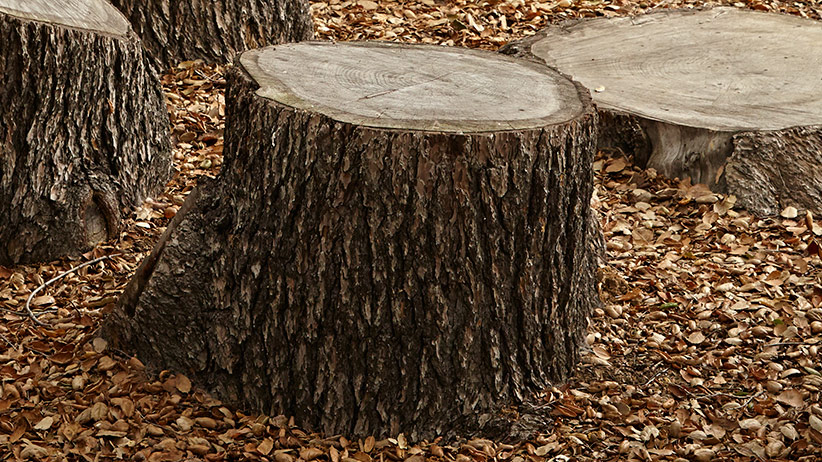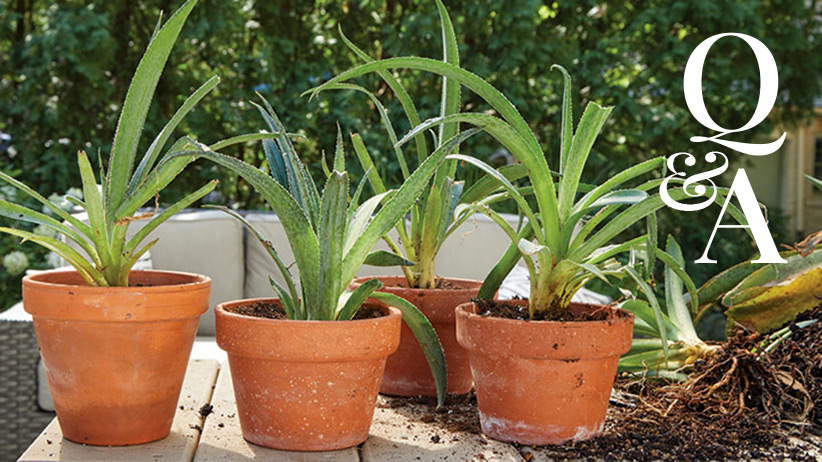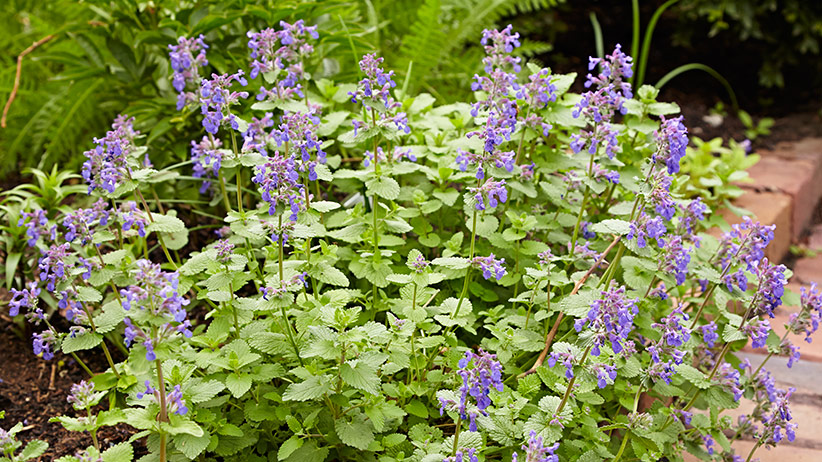
Deadheading techniques
Whether you’re deadheading, or cutting back spent flowers, to tidy up your garden or want more blooms, it helps to know the right place to make the cut. This will ensure that you don’t leave ugly stubs sticking up and also guarantee that you don’t cut off buds that may already be forming the next wave of flowers. When does precision pay and when can you shear indiscriminately? Find out here!
Check out our Perennial Deadheading Guide to find out how to deadhead more than 50 common perennials
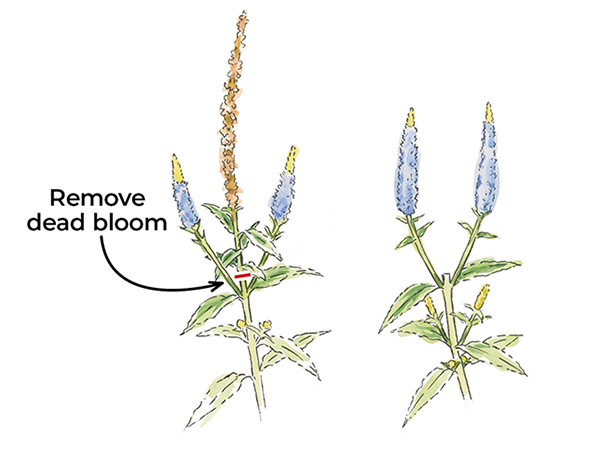
Deadhead to make room for more flowers
Some perennials, such as ‘May Night’ (‘Mainacht’) salvia (Salvia x sylvestris) and spike speedwell (Veronica spicata), have a large flush of flowers. They tend to have a central bloom with several branches that form smaller blooms later. When they’re done blooming, you could cut the entire plant back by a third and wait for a rebloom. Or you can remove the large center bloom to encourage the lateral buds to develop into flowers more quickly. When you cut, try to cut back to a spot right above a leaf because new buds and branches will likely form at that point.
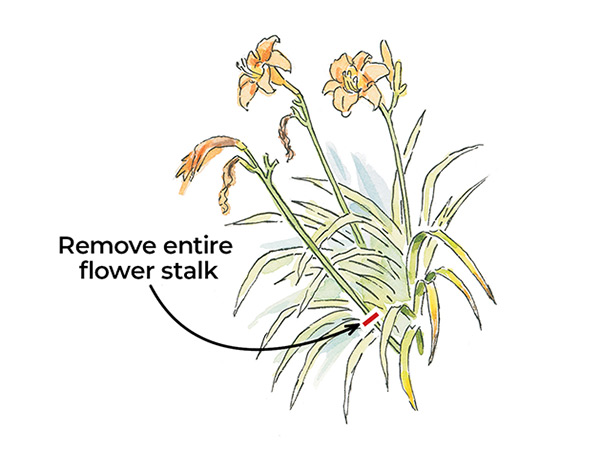
Cut back flower stalks
Some flowers send up leafless (or mostly leafless) flower stalks from a rosette of basal foliage. This daylily (Hemerocallis hybrids) is one example. Hostas (Hosta hybrids), coral bells (Heuchera spp. and hybrids) and bearded irises (Iris hybrids) are other examples. Feel free to pick off individual blooms as they fade, then cut the stalk back to below the foliage when all the blooms are done. Some plants will send up more flower stalks later. Others won’t.
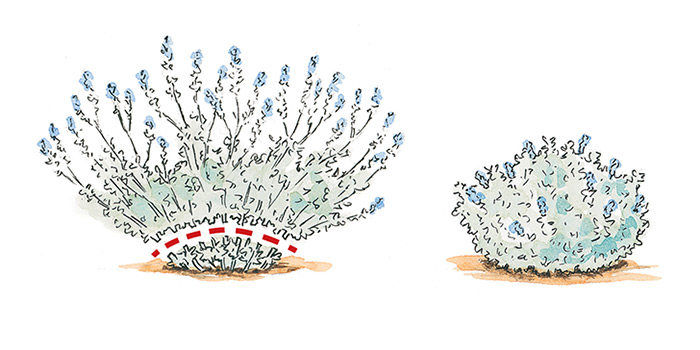
Shear plants to tidy them up
If there are too many flowers to individually snip, wait until a perennial is done blooming, and shear it all at once. Using hedge clippers, you can take a little off the top, or reduce the plant down to a few inches. This works especially well on mounded plants with lots of small flowers, such as ‘Moonbeam’ coreopsis (Coreopsis verticillata) and catmint (Nepeta spp. and hybrids), here. Be sure to leave a little foliage to help plants gather energy and regrow. Feed a balanced formula liquid fertilizer right away, and plants will often have a lighter rebloom in a few weeks.








